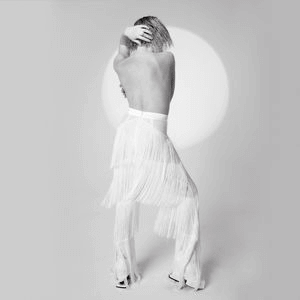“Mile-Long Mixtapes”: Ep. #1
The Missing Piece of Pop Carly Rae Jepsen Brings to Light
by Kellie M. Beck
My old boss is actually the one who introduced me to Carly Rae Jepsen. I was working at Aeropostale at the time– yes, that store, and yes, there were so, so, SO many graphic t-shirts. When I first got the job at 16, Jeremy terrified me. He was this tall, super-built guy; the kind that carries around gallons of water with them no matter what. He was notoriously adored or despised at the store by the associates. He was snarky, and quick-witted, and if I’m being honest, a little mean. I wanted him to like me, but I was freakishly intimidated by him. So when he asked me at work one night if I liked Carly Rae Jepsen, I lied through my teeth and said yes. I stumbled through a conversation about her album Emotion until Jeremy was pulled away by a soccer mom. That night, I listened to Emotion three times through so by my shift the next day, I’d be able to string a sentence or two together about her music.
Three years later, when I finally left the job, Jeremy and I were friends. Coworkers, sure, but friends. At least once a week, we closed together to Carly Rae Jepsen’s Emotion, or Emotion B Side, her newly released EP. The music was fun, peppy, and flirty. I was nowhere near the fan that Jeremy was, but I had to admit, CRJ sure could write an earworm.
I would hear a handful of singles throughout my time at college– my best friend would play her occasionally. She released her junior album, Dedicated, and I got to know the singles. But I haven’t devoted much time to her music since I left Aeropostale, until I saw on Jeremy’s Instagram that he was finally leaving his position as store manager there. On my drive this week, I listened through both of her albums and discovered that Carly Rae Jepsen doesn’t get anywhere near the credit she deserves.
There’s a really great short story that gets studied pretty frequently in creative writing classes here, called “The Frog King” by Garth Greenwell. The content of the story isn’t really what’s important here, but rather, the ending. It’s a happy ending, and not a cheap or shallow one. The takeaway taught oftentimes is that happy endings are often the hardest to write. Tragic endings are easier to pack with meaning and morals, and are therefore mistaken as “better”.
Looking at pop music today, songs written about love and passion are rife with heartbreak– and even when they are not, they often lack depth and nuance. Artists write all the time about falling in love. It’s a universal human experience that most audiences have had, or at least have come close to. But rarely do these artists go beyond the surface level to explore what these feelings really mean for us as people, or how our experience of love changes as we grow older. Carly Rae Jepsen is the exception.
Her junior album, Dedicated, is perhaps the best example. Carly’s sound has matured, and no longer drowns in sticky, pop production like her debut album, “Kiss”. Out of fifteen tracks, almost all of them explore the beginning of relationships, the depth of them, and eventually, their happy endings.
The undercurrent of Dedicated fights to affirm that happy endings can still be about people of strength. Looking at her track, Happy Not Knowing, Jepsen explores the hurt of past relationships seeping into her hope for new ones. But it goes beyond that, painting an arc throughout the song that our past experiences are things we learn from in new relationships, and sometimes, it really is best to not know where a relationship is going and to live in the moment of it instead.
In a culture that seems to be hurtling towards the next great thing at all times, Carly Rae Jepsen urges audiences to believe in great love– the kind that can span years and define our lives, and that even when the world spins too fast around us, it is worth looking for, fighting for, and hurting for.



